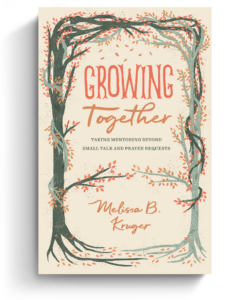Have you heard of the “other Reformed theology”? Many in the Reformed resurgence only know one aspect of the broad historical stream of Reformed theology, and sadly, many stereotypes of “Calvinism” exist because John Calvin’s legacy has been unknowingly truncated. Too often, Reformed theology is defined merely by the “five points of Calvinism”: total depravity, unconditional election, limited atonement, irresistible grace, and perseverance of the saints. While this emphasis on how God saves sinners has value, it fails to capture the full breadth of the heritage of Reformed thought. Two major streams of Reformed theology developed out of the work of John Calvin: the Scottish Calvinist stream and the Dutch Reformed stream. The Scottish tradition has a strong focus on doctrines of salvation and the ordo salutis (order of salvation). But the Dutch Reformed tradition also emphasizes worldviews, cultural engagement, and the lordship of Jesus over all aspects of life. The two streams have not converged as much as you might expect, considering their common source. So let’s take a short tour of the Scottish and Dutch Reformed theological traditions.
Scottish Tradition
In the early days of the Reformation, pastor-theologian John Knox (1514-1572) was part of a group trying to reform the Scottish church; his involvement, however, led to his imprisonment and eventual exile. While in exile, he traveled to John Calvin’s base of operations in Geneva, Switzerland. There Knox became enamored with the doctrine of predestination. Knox eventually returned and became the leading figure in founding the Church of Scotland, the origin of Presbyterianism. Subsequent generations within the Scottish Reformed theological tradition (including English Puritans such as Richard Baxter and John Owen) gained a reputation (not entirely fair) for being gloomy preachers of hell, for exercising harsh church discipline while delving into the private lives of church members, and for suppressing the arts. American theologians such as the great Jonathan Edwards were also influenced by Scottish theology and philosophy and inherited some of these same critiques. There may be a bit of truth in each of the common criticisms, but such practices arose out of unique cultural situations and should not be the only measures by which Scottish Reformed theology is judged. Some Scottish Reformed theology drifted into some heavier-handed forms of Calvinism, but its original confession (the Scots Confession of 1560) upheld the missional nature of the church and the evangelistic focus of theology. The Reformed doctrine of the Scots was never separated from practical living. The Scots looked to the Westminster Confession of Faith as their doctrinal standard (underneath Scripture) and sought to implement those great theological truths into their everyday lives.
Dutch Tradition
Calvinism arrived in the Netherlands in the third wave of the Reformation in the 1560s. Dutch Calvinism contributed some of the most important early Reformed creeds and confessions: the Belgic Confession of 1561 gave original definition to the Dutch Reformed Church; the Heidelberg Catechism of 1563 fostered unity between the Dutch and German Reformed; and the Canons of Dort in 1619 served as a Reformed ecumenical council. Over time the Dutch Reformed Church drifted into theological liberalism. Then, in the late 19th century, the work of Neo-Calvinists such as Abraham Kuyper, Herman Bavinck, and Louis Berkhof shaped what is now known as the Dutch Reformed school of theology (articles will eventually follow on each of these figures). While Dutch Reformed thought has much in common with the broader Reformed tradition, several features set it apart. Some of the best summaries of Dutch Reformed thought are captured in Douglas Wilson’s phrase, “All of Christ for all of life,” and in the famous words of Abraham Kuyper: “There is not a square inch in the whole domain of our human existence over which Christ, who is Sovereign over all, does not cry, ‘Mine!’” Kuyper argued for the lordship of Christ over all of life and urged Christians not to dismiss certain fields of culture and society as “worldly.” He believed that God established structures of authority in different spheres of creation, and recognizing the boundaries between these spheres maintains and balances justice and order in society. According to Kuyper, God’s rule on earth is brought about through the faithful cultural presence of his church. This belief led the Dutch theologians to emphasize cultural action on the part of Christians. Kuyper wanted Christians to understand that each worldview has unique philosophical assumptions, and that Christian assumptions shape the way believers should act in every area of life. As a result of God’s absolute sovereignty, Christians experience the grace of God in all aspects of life, not just in church activities and worship services. The high point of Dutch Reformed theology is arguably Louis Berkhof’s Systematic Theology (full disclosure: I first came to Reformed theology through reading Berkhof when I was 17). Dutch Reformed theology shared important essentials with the Old Princeton school of theology (from the Scottish Calvinist tradition) in the United States, but they differed significantly in some areas. The Dutch believed that people have no religiously neutral, “objective” rational faculty. This meant there was no common ground, necessarily, shared between believers and nonbelievers. This made apologetics more of a clash of worldviews than a debate over evidence.
Complementary, Not Contradictory
It may seem like the Scottish and Dutch streams of the Reformed church are miles apart in their emphases, but it is important to observe the significantly different cultural situations in which each of the traditions developed. The Dutch theologians faced a church giving in to modernist theological liberalism in the 19th century and tried to find a cultural home in their new settlements in the United States. As such, we should expect their emphases on the supreme reign of Christ over the ideologies of the day and their careful conception of culture. In a way, Dutch Reformed theology applied the broad principles of the Reformation. The Scots focused more on the primary doctrines of the Reformation than on their specific application to new cultural situations. Moreover, the Scottish Reformed took the initial Reformation to the surrounding regions, which explains their emphasis on missions. Nevertheless, even in these different points of focus, both the Scottish and Dutch Reformed theologians focused on making disciples and bringing the gospel to bear on the world around them. Both traditions offer compelling examples for the Reformed movement today.
Involved in Women’s Ministry? Add This to Your Discipleship Tool Kit.
 We need one another. Yet we don’t always know how to develop deep relationships to help us grow in the Christian life. Younger believers benefit from the guidance and wisdom of more mature saints as their faith deepens. But too often, potential mentors lack clarity and training on how to engage in discipling those they can influence.
We need one another. Yet we don’t always know how to develop deep relationships to help us grow in the Christian life. Younger believers benefit from the guidance and wisdom of more mature saints as their faith deepens. But too often, potential mentors lack clarity and training on how to engage in discipling those they can influence.
Whether you’re longing to find a spiritual mentor or hoping to serve as a guide for someone else, we have a FREE resource to encourage and equip you. In Growing Together: Taking Mentoring Beyond Small Talk and Prayer Requests, Melissa Kruger, TGC’s vice president of discipleship programming, offers encouraging lessons to guide conversations that promote spiritual growth in both the mentee and mentor.

































